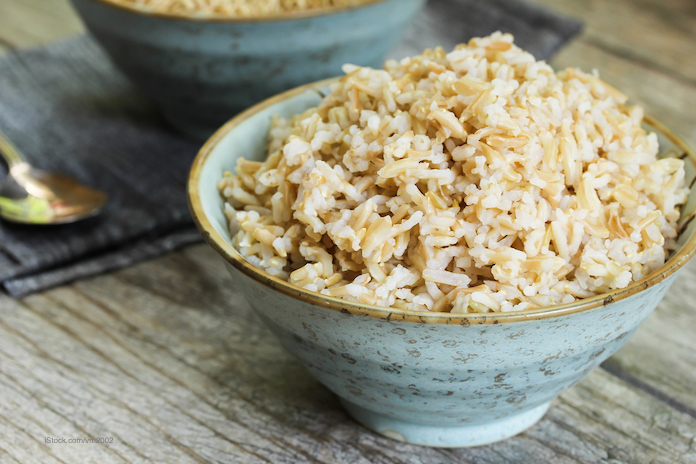A new study conducted by Healthy Babies Bright Future (HBBF) has found that there is six times more arsenic in infant rice cereal than in other types of cereals. Arsenic is a heavy metal that can cause health problems including cancer, neurological problems, and reduced IQ.

Rice contains more arsenic than other grains because of the way it grows. Rice paddies are flooded with water, which aids the absorption of the heavy metal through the roots of the plant. Rice plants absorb ten times more arsenic than other grains while they grow. And rice is grown where arsenic is abundant in the soil. The grain is often planted in old cotton fields in the southern United States, where arsenic pesticides were sprayed for years.
Testing by Consumer Reports in 2012 first brought this issue to consumers’ attention. The report showed that there were measurable levels of arsenic in almost all of the rice products they tested. Unfortunately, there are no federal standards for arsenic in food, although there is a limit in drinking water.
In peer-reviewed scientific literature, at least 13 studies link arsenic to IQ loss. In fact, widespread exposure to arsenic in infant rice cereal shifts the population-wide IQ down.
The biggest problem with arsenic in rice is in baby food. Since babies and infants are growing rapidly, their brains and bodies are more susceptible to toxins and poisons. The Consumer Reports data showed that rice cereal and rice pasta can have more inorganic arsenic than previously thought. One serving of some of the cereals they looked at could put kids over the maximum amount of rice they should eat in a week. And it’s worth noting that there is no known safe level of arsenic exposure.
The report from Healthy Babies Bright Future states that, “FDA is, in a word, stalled.” That agency drafted a guidance document to cereal makers last year, after four years of assessment, but has not set a final limit for arsenic in rice cereal. It has also failed to finalize the proposed cap in the draft guidance.
HBBF tested 105 infant cereals. They found that non-rice and multi-grain varieties have 94% less arsenic than leading brands of infant rice cereal. The report states that, “These alternate cereals include reliable and affordable choices for parents seeking to reduce infants’ exposures to arsenic.”
Rice cereal has been recommended as the first food for infants for a reason: it rarely causes allergic reactions. It’s also inexpensive.
The report recommends that first, cereal makers must take steps immediately to reduce arsenic in their products. They can buy rice from producers with feeds with lower arsenic levels in the foil. They can grow rice strains that are less prone to arsenic uptake, and can prepare rice with more water than is needed, discarding the excess liquid. Producers can also blend rice with lower arsenic grains.
They also say that the FDA “should act immediately to set an enforceable, health- based limit for arsenic in infant rice cereal and other rice- based foods. The limit should protect infants from both cancer and neurological harm.” The report states that “In setting its 2016 proposed action level, the agency did not consider IQ loss or other forms of neurological impact, allowed cancer risks far outside of protective limits, and failed to account for children who have unusually high exposures to arsenic in rice.”
The researchers also suggest that parents can immediately lower their child’s arsenic exposure by switching to other cereals. Consider oatmeal, multi-grain, and other non-rice cereal products for your baby.




